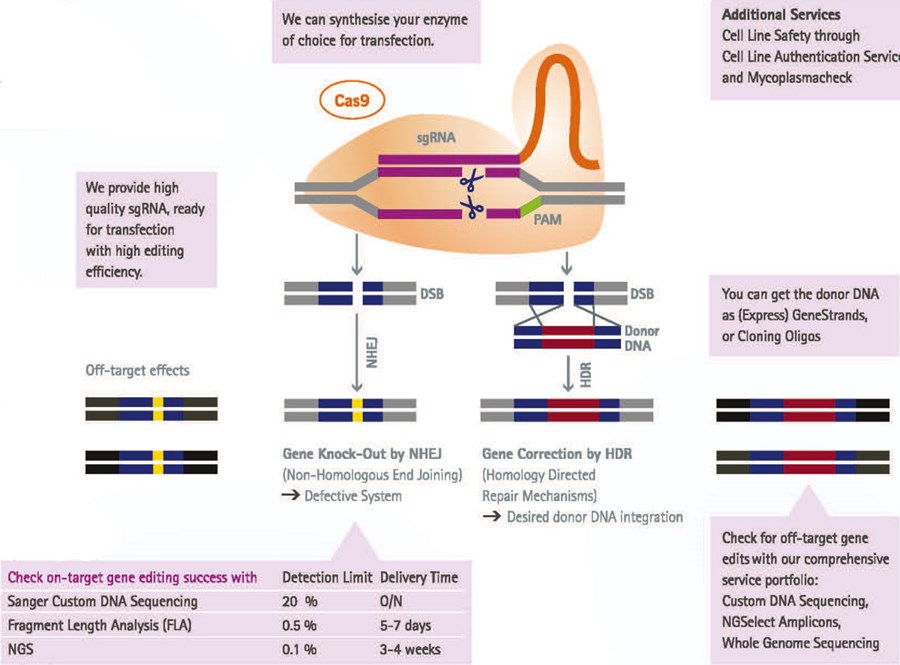The CRISPR system is a naturally occurring mechanism in bacteria for defense against bacteriophages. In recent years the system has been made available for genetic engineering in order to introduce specific changes in a cells genome.
What is needed for CRISPR?
For a functional CRISPR system three components must be considered:
Genomic target sequence: Within the gene you want to change, a sequence motif "NGG" (PAM motif) must be present. Inside 20 bp upstream of this motif a double-strand break is introduced.
Guide RNA: The gRNA consists of two structural parts which are connected to form a chimeric gRNA. The sequence-specific part of the gRNA is a RNA of 20 bp in length which is complementary to the genomic sequence. This part varies depending on the target sequence. The second part of the gRNA is constant, no matter which genomic sequence is targeted.
Cas9 enzyme: The Cas9 protein is an RNA guided endonuclease. Once the enzyme has the gRNA bound it is directed to the genomic target sequence. Within the target sequence Cas9 introduces a double-strand break.
How does CRISPR work?
Once the three components are present in the cell, the CRISPR system is active: Cas9 binds the transcribed gRNA. The gRNA guides the Cas9 enzyme to the genomic sequence which is complementary to the sequence-specific part of the gRNA. Once Cas9 arrives at the target-sequence the endonuclease becomes active and introduces a double-strand break into the cells genome.

The repair of the double-strand can be performed in two ways:
Knock-Out by NHEJ: The two separate DNA sequences can be recombined by non-homologous end joining, but this mechanism is defective. For example, incorporation of 1 additional basepair into the target sequence results in a frame shift and ultimately an inactive protein.
Knock-In by HDR: Providing the cell with a donor DNA, homologous to the sequences up- and downstream of the target region, the double-strand break may be repaired by the homology directed repair mechanism. In this case, the donor DNA integrates at the site of the double-strand break into the genomic sequence.
Applications for CRISPR
By introducing Knock-Outs or Knock-Ins, CRISPR is used for various applications of molecular biology, such as:
- Studying the gene function
- Introducing point mutations
- Exchanging of genes
- Adding or removing genes
- Modifying regulatory elements
What is the Process?
